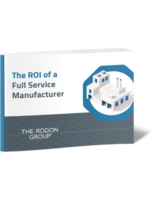The Proper Selection and Application of Anti-Seize Compounds
Both assembly line and maintenance and repair personnel have long relied on anti-seize compounds to prevent corrosion, galling, seizing, and stripping of bolts and fittings during disassembly and reassembly.
Unfortunately, getting the right anti-seize compound in the right quantity onto each fastener has always been a messy operation and one in which over application wastes product and under application can reduce its effectiveness.
Now comes news that some manufacturers of anti-seize compounds are reducing the metal content in their anti-seize products due to skyrocketing costs of metals - often without publicly acknowledging that a change in formulation has occurred.
This practice may keep the cost of the compound down, but it can reduce the effectiveness of the product in harsh industrial environments where high temperatures and exposure to chemicals can lead to more serious issues with the seizing and galling of fasteners.
As a result, this seemingly ubiquitous product is the subject of much more attention and investigation prior to purchase; particularly for industrial applications in which proper selection and application of anti-seize compounds will impact the bottom line.
Anti-Seize Compounds
Traditionally, anti-seize compounds are brushed on bolts and other components to eliminate the corrosion that causes a fastener to "seize" over time during service.
This can make the removal of a piece of equipment or any of its components for maintenance very difficult and time consuming. It may even necessitate cutting off the heads of a fastener or drilling it out. This increases the time and costs of service, and can potential slow or bring production to a halt while key equipment is offline.
To prevent seizing at these later dates, most Anti-Seize compounds are formulated with a lubricant and metal or solid content that has a low coefficient of friction. Once the lubricant dissipates, the metallic content is left behind to facilitate removal of the fastener during service and re-assembly even years later.
"When the lubricant dissipates in a few months, it is gone," explains John Heydt, President of Anti-Seize Technology, a manufacturer and worldwide supplier of more than 15 anti-seize compounds, as well as other lubricants and sealants. "The danger occurs if a manufacturer reduces key metal compounds in its anti-seize formula without notifying customers just to cut costs. That could substantially reduce the anti-seize compound's effectiveness."
Although anti-seize compounds have been used for decades, it is important to understand how changes in formulation can improve or impair maintenance efficiency and production uptime.
Most anti-seize compounds originally contained copper and graphite or copper, aluminum, and graphite, which tended to work for most applications, in standard settings. These anti-seize compounds were well suited to high temperature applications since aluminum can withstand temperatures 1000 °F, copper to 1800 °F and graphite to over 2000°F.
However, since copper and aluminum are reactive metals, they were ill suited for some applications exposed to substances like acetylene and ammonia.
For extreme high temperature applications, or those where a non-reactive compound was needed, special anti-seize compounds such as nickel or molybdenum disulfide (Moly) were developed. Nickel can withstand temperatures to 2,600 °F and is chemically inert. Moly is non-reactive, non-metallic, almost as frictionless as PTFE and can withstand temperatures to 2,400 °F.
Heydt advises that plant MRO personnel investigate the percentages of metals in the anti-seize compounds before they make a purchase.
"For a fair comparison of effectiveness and true value, you need to ask about metal content," explains Heydt, adding that his company has never offered an anti-seize product with reduced metal content. "The metal content in anti-seize compounds is similar to the active ingredient in medicines. Without the active ingredient in medicines or the metal compounds in anti-seize compounds, you're lowering performance and not getting much for your money."
Speeding Application
Although metal content is a critical factor, so too is the method of application. Unlike conventional brush-on application methods, new and innovative application methods are changing the way anti-seize compounds are applied for maximum efficiency in high-volume maintenance settings.
"Most anti-seize compounds are applied with a brush," explains Heydt. "However, this requires the use of two hands, one for the brush and one for the bolt, and is often very messy. It also means the applicator can put on too much or too little anti-seize compound. Over application in a high volume setting adds unnecessary cost for excessive compound, and under application means it might not work. It's important to apply the correct amount of product cleanly onto each part."
The SLICKON® Bolt Dip and Brush(TM) device marketed by Anti-Seize Technology allows plant personnel to quickly coat threaded bolts with precisely the required amount of anti-seize compound. This is accomplished by "dipping" the bolts into a unique application device.
To dip the bolts, technicians simply push bolts of up to 1/2" diameter through one of four sized holes into a plastic lidded container with a reservoir of anti-seize compound inside.
Dipping each bolt in this way quickly and evenly applies anti-seize compound around 100% of its thread circumference without tedious hand-brush application.
Because any excess anti-seize compound on the bolt is wiped off by a rubber diaphragm in the container and is reused when the bolt is removed, this method can prevent mess, reduce anti-seize compound use by up to 50%, and speed application by up to 80% compared to traditional brush use. The device includes a brush for use with bolts larger than 1/2" diameter or non-bolt anti-seize compound application, such as sparkplugs.
For more info, call 800-991-1106; Fax 847-455-2371; email sales@antiseize.com; visit www.antiseize.com; or write to Anti-Seize Technology, Inc. at 2345 N 17th Avenue, Franklin Park, IL 60131.




